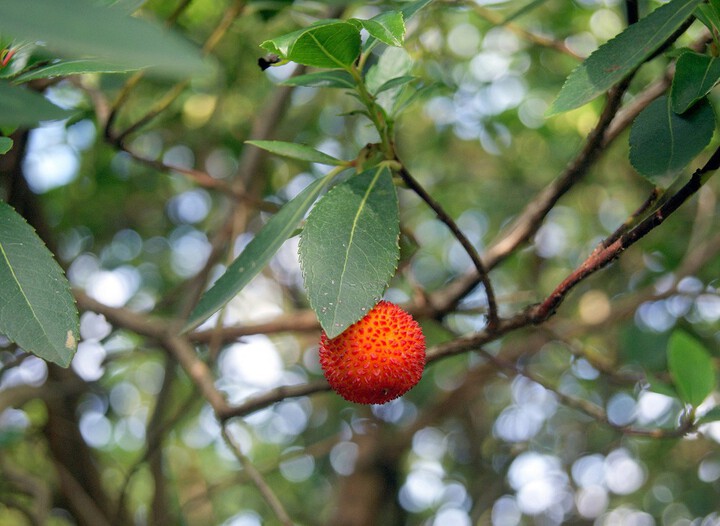If you're looking for a decorative, fruit-bearing tree for your garden, look no further than this berry beauty.

The strawberry tree, an ornamental broadleaf evergreen, produces small red fruit—but, surprisingly, they're not strawberries. Uunlike the sweet, juicy fruit of a strawberry plant, a strawberry tree's fruit is bland and hardly worth eating. So, you might be asking yourself, "Is it worth planting?" The answer is definitely. The tree has gorgeous green leaves, making it an excellent choice to include in a garden landscape. Strawberry trees, often referred to as shrubs for their bush-like resemblance, also produce delicate urn-shaped pinkish-white flowers whose fragrance attracts bees and butterflies. Here are a few basics you'll want to keep in mind before planting one of these low-maintenance trees—that never needs to be watered—in your yard.
Where They Thrive
Strawberry trees, which are native to the Mediterranean to Ireland, are winter hardy in zones seven through ten. Before purchasing a tree online, know your zone so you can learn whether or not a strawberry tree will specifically grow well in your area. (You can find your zone on the interactive USDA Plant Hardiness Zone map.) The tree grows best in full sun or partial shade, and established plants have some drought tolerance.
What About the Soil?
Strawberry trees aren't fussy about the kind of soil they grow in, but it should be consistently moist and well-drained, says Lucy Bradley, an extension specialist at North Carolina State University. Before planting your tree, make sure the soil is healthy. To check the all-important pH level of your soil, get it tested by (or get a test kit from) your local extension service. If it's missing any nutrients you have the opportunity to get it in shape before planting the trees.
How to Grow a Strawberry Tree
Strawberry trees, which bloom in October through December, typically grow 10 to 15 feet in height as well as spread (width), but some have grown as high as 30 feet. Most grow in a multi-stemmed form but can be trained as a single trunk tree. And it'll last for around five or six years. A new plant peaks three years after it's established and then dies about two or three years later.